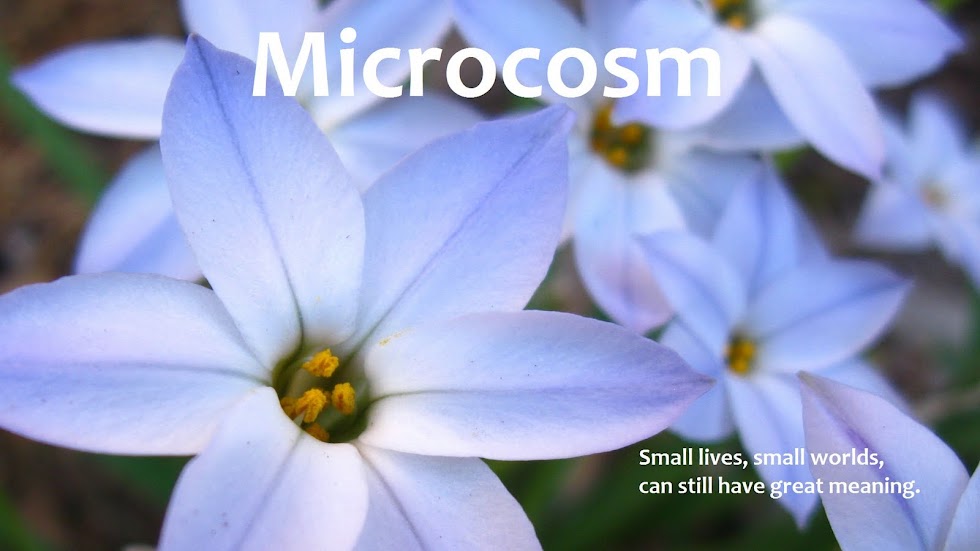Cast of Characters (all Prunus besseyi):
- The Sad Sand Cherry
- Still haunted by its violent encounter with a workman's boots. Brooding but brave.
- The Slow Sand Cherry
- Cautious and uncertain, despite the advantages of its upbringing. Always comes through for you in the end, or maybe a little later.
- The Teacher's Pet Sand Cherry
- Reads horticultural books on sand cherry behavior and obeys them. Never a leaf out of place. Pleasant, yes; quirky and interesting, not so much.
- The Big Hairy Monster Sand Cherry
- Has the bad habit of looming, but can't really help itself. It means well and means it enthusiastically.
Unfortunately, the cast list is as far as we can get with this particular comedy, because none of the characters is willing to act in the same play. (The Teacher's Pet did try.) I'm not really surprised. In Cussedness (The Original) the four sand cherries went completely off-script when they welcomed autumn, each one ad-libbing the scene as if the others weren't even there. What chaos! Four little solo numbers, each delightful in its own way, but all running simultaneously. My, my.
For four months now the cherries have had nothing to do but hang out together and rehearse their lines for Welcome, Spring! You'd think they would have had time to hone their ensemble work, but no. Now that the play has opened, each cherry is once more enacting its own separate scene, playing to the crowd in its own corner of the garden.
The Sad Sand Cherry, except for six blossoms at the tip of one stem, has chosen to forgo flowering altogether and focus its attention on leaves. A wise choice, one feels, and suited to its serious character. The healthy glow of the foliage is eloquent on its own—minimalist, yet luxuriant; understated, yet hopeful. By focusing on technique this year, this cherry may really get its feet under it and grow. Next spring perhaps it won't be typecast in such sad roles any more. If it ever gets to be more than two feet tall, I envision it in something quite heroic.
 |
| Sad, but not as Sad as it was. |
The Slow Sand Cherry has a few blossoms and leaves dotting its many stems and branches, with more appearing every day. Very lovely they are, too, now that they're no longer quite towered over by the salad burnet. Some of the flowers are opening; some are still back in the dressing room. If Hamlet were to welcome spring, this is how he would go about it, and spring would be a five-act play that lasted a good, long while.
 |
| Slo-o-o-o-w. |
The Teacher's Pet is absolutely loaded with buds. With the Pet's usual exquisite timing, the flowers ought to open just as the tulips and ipheion at their feet are showing their best. T. Pet's tallest branches are the perfect height for the sun to strike them, ting! as it tops the wall in the morning, giving each of the high, snow-white buds its own little halo. Ingenue or diva? A flawless performance, either way.
 |
| Oh-So Perfect. |
The Big Hairy Monster, despite its recent, accidental pruning, is putting on a glorious Ziegfeld Follies number, playing chorus, dancers, and orchestra all by itself. Looking up through its branches at the sky, I find myself quoting, "Even Solomon in all his glory wasn't arrayed like these." The fragrance of all the flowers fills the walled garden with a wild sweetness that makes me want to break into song and dance, too. What a fabulous grand finale.
 |
| The sweetest, most attractive monster you ever will see. |
Once more may I point out that the whole idea of planting four identical (ahaha) shrubs in the four quadrants of the garden was to create a single, overall effect? To have the garden be a white froth of blossom in springtime? In this case the goal isn't only aesthetic: the cherries are not self-fruitful. For fruit to set on, multiple cherry bushes have to be in bloom. At once. That is to say, all at the same time. Otherwise, the bees' pollinating work goes for naught. (The Teacher's Pet, of course, always manages to fruit well.)
So much for directing—really, I'm just here to applaud.


























